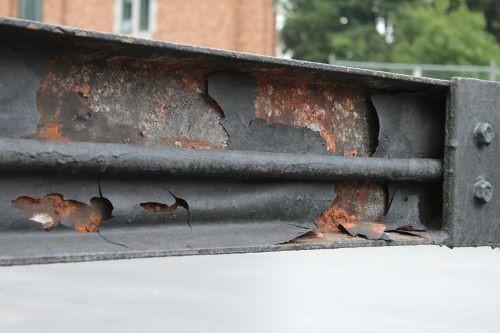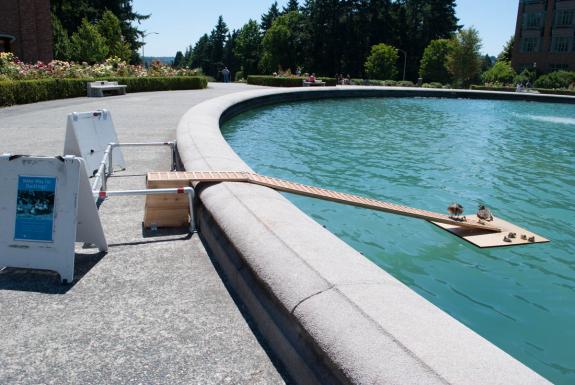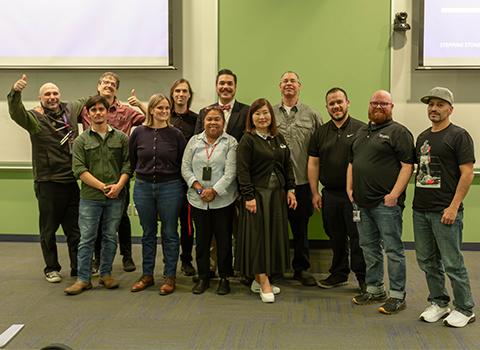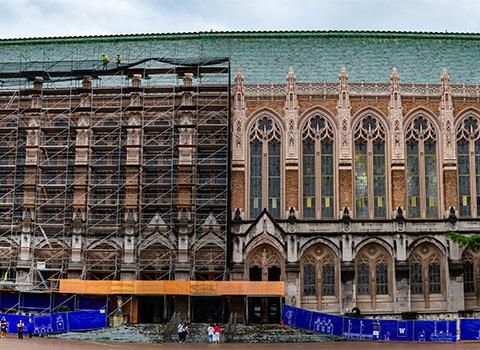Draining Drumheller Fountain
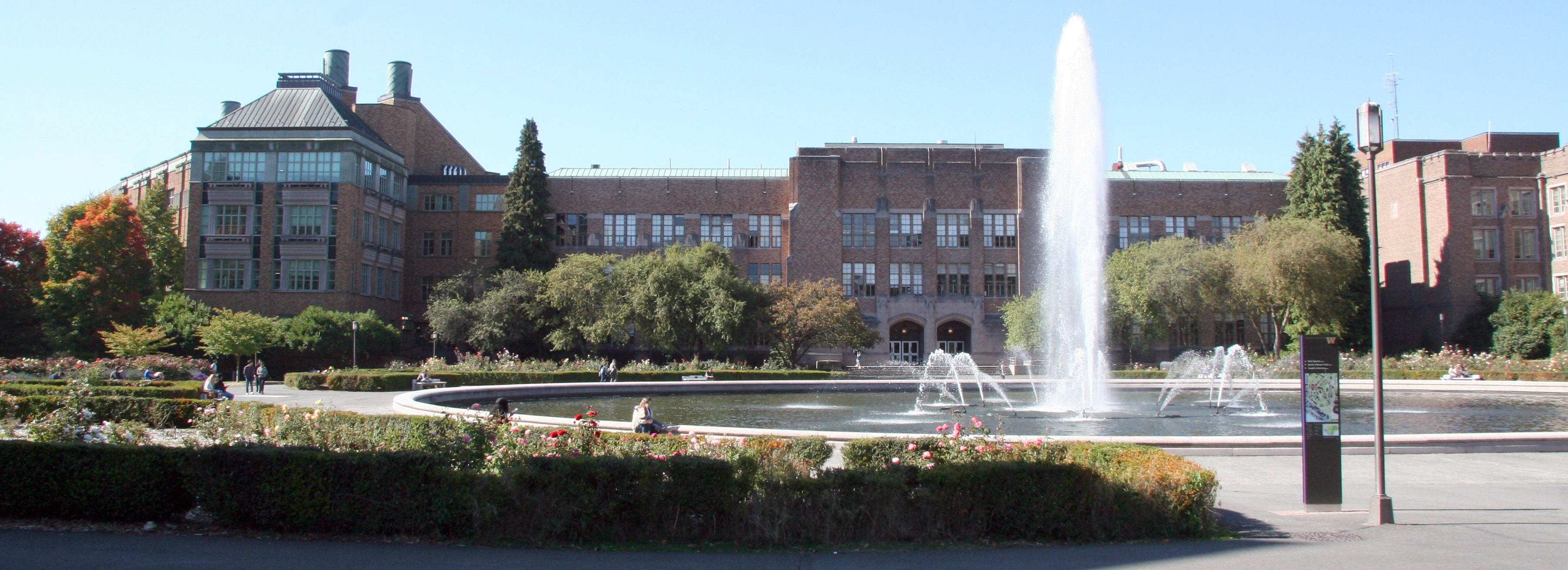
What lies beneath
What lies beneath
A familiar sight on campus every other year is the fencing around Drumheller Fountain, which UW Facilities workers will put up April 15. It’s a safety precaution needed to ensure that routine maintenance can be performed by roughly 30 employees from more than 24 shops. Not to worry, however; come June 7 the fencing around the fountain will be taken down and it’ll be ready for graduation picture-taking.
Brian Davis, project manager, says it takes about one week to drain the pond, which holds approximately one million gallons of water.
After two years, the contents found in the pond never fail to surprise Facilities employees who retrieve a potpourri of items.
For example, in 2017, 20 cellphones were found, most likely the casualties of selfies gone awry, says Davis. In past years, items recovered included sunglasses, a mattress, golf balls, traffic cones, cans, bottles and coins.
Repair work
Repair work
This year, three extra weeks have been added to the shutdown in order to inspect and possibly restore and replace portions of the fountain’s steel infrastructure, which has shown increasing signs of aging. The last time any of the infrastructure was replaced was in 1962, the same year the Space Needle was completed in time for the World’s Fair.
Spring is also the time when the Facilities custom-made duckling ramp is installed adjacent to the fountain, giving a hand to Mother Nature: visiting campus ducks have been known to frequent campus in early April and subsequently nest. After hatching, they lead their ducklings to water. The ramp helps them reach the pond.
Fine feathered friends
Fine feathered friends
This year, if the ducks arrive and the fountain hasn’t been drained, the ramp will go up; but once the pond begins being drained, and if the ducklings are using it, Davis says, the UW will call the Washington Department of Fish and Wildlife, who’ll escort the family to an alternative safe haven.
Howard Nakase, manager of grounds operations says, “We don’t anticipate the need for a duck ramp installation. The mating and nesting of ducks typically occurs right around now. They will sit on their clutch of eggs for approximately a month, so we will have drained the fountain by then.”
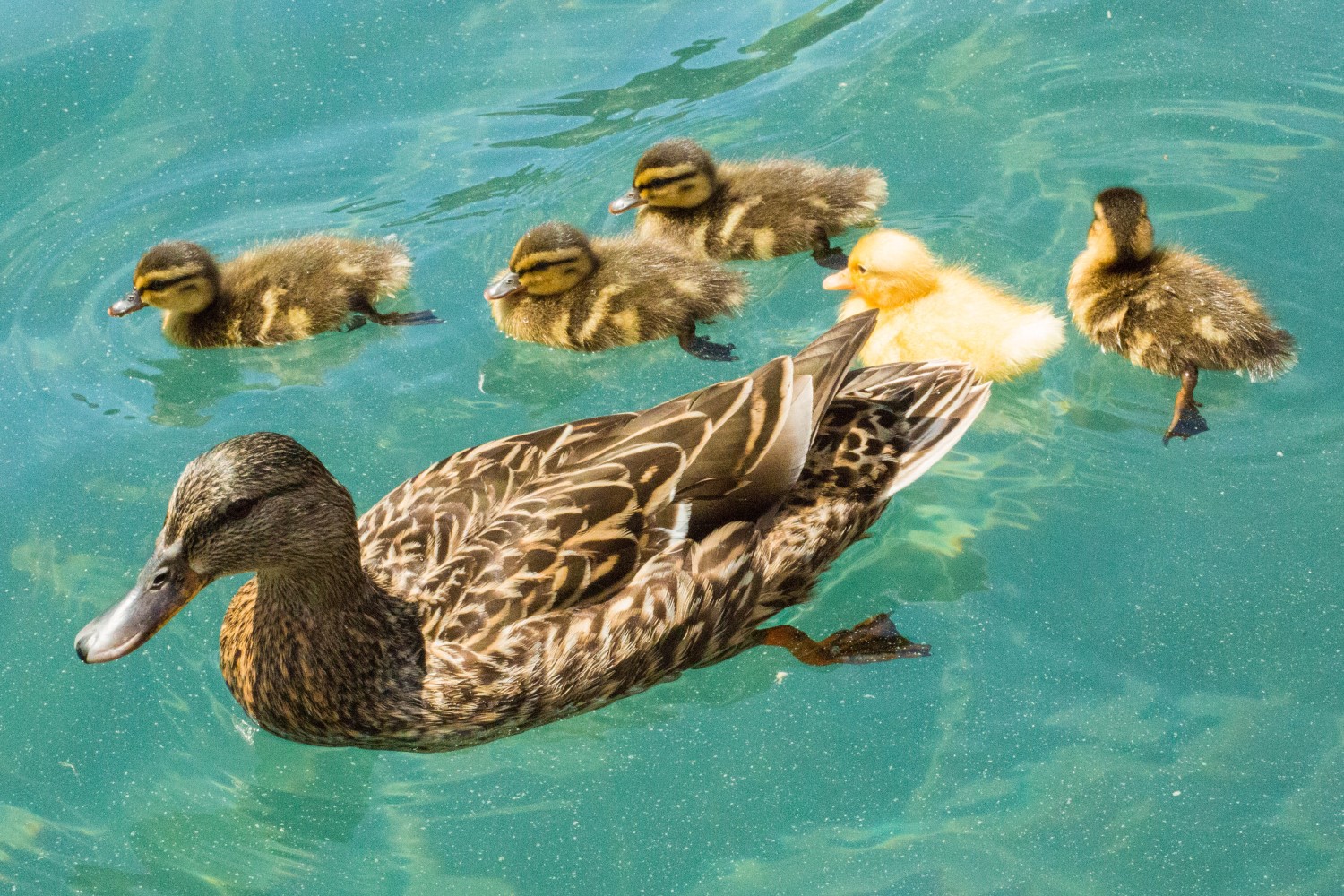
In years past, ducklings have found the Fountain to be a safe haven in the city.
Once the pond has been fully drained and cleaned, careful inspection of the pond liner will take place to ensure its integrity. Then, the mechanical and electrical parts of the fountain will be inspected to determine if any repairs are necessary along with any scheduled maintenance. The pond will be refilled with fresh water and the pumping systems tested to ensure that it is properly adjusted.
The pond has existed on campus in some form since the 1909 Alaska Yukon Pacific Exposition, when it was called Geyser Basin.
Fast facts about the fountain
Fast facts about the fountain
- Its nickname, Frosh Pond, dates back to the early 1900’s.
- First known as Geyser Basin, the original pond was built for the 1909 Alaska-Yukon-Pacific Exposition.
- It was named in 1961 for University Regent Joseph Drumheller, who gifted a center fountain for the pond during the UW’s centennial celebration that year.
- It has three banks of jets. The center jet can shoot water up to 100 feet. The other two jets send water slightly outward of between 10 and 30 feet.
- The fountain is traditionally turned off after the last home football game and turned on April 1, operating between 7 a.m. to 5 p.m., Monday through Friday, and 8 a.m. to 5 p.m. on Saturdays and Sundays; and for other selected special events.
- "The Fountain and the Mountain," written by UW Professor Emeritus Norman Johnston, refers to the iconic view of Drumheller Fountain and Mt. Rainier in the distance.

